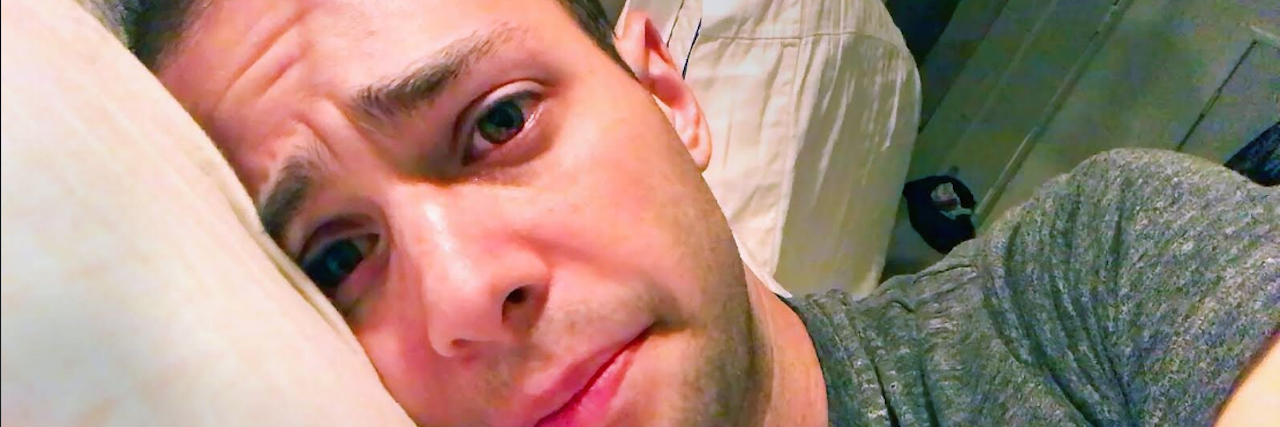Why Zach Kornfeld's Viral Video Is Critical for Chronic Illness Awareness
Over 1,500,000 views. That is how many views the video that Zach Kornfeld, one of the fun and goofy quartet known as the “Try Guys,” has had on his video updating the Youtube sphere on his chronic illness. Diagnosed almost a year ago with ankylosing spondylitis (AS), the message that Zach shares with his viewers is one that both demonstrates the critically difficult reality of living in chronic pain, but also the efforts that he is making to support his condition.
His video is critical for raising awareness about chronic pain and invisible illnesses. Millions of people around the world with chronic conditions experience chronic pain, and yet, it is one of those things that, as Zach points out, can sometimes make people in pain question whether “it is all in their head.” For some, the pain they will experience fluctuates, falling to a low when they are not in a flare, and peaking during a flare-up of their illness. Others, like Kornfeld, experience a constant baseline of pain that never seems to go away. It may keep them up at night, cause further fatigue, and as such, make other symptoms associated with their (in)visible illness feel worse.
Additionally to that, as seen in a portion of the video, medication, such as the injections that Kornfeld does, can also add injection site pain, as well as cause needle fatigue. It becomes easy, as Zach and people in the comment section of the video mention, to avoid thinking or reacting to the red flags our bodies throw up to alert us to worse symptoms or flare-ups of the invisible illnesses. For when the body is in a “low” flare level, or when the medication is working well and providing results, it can be easy to slip into pre-diagnosis patterns – to believe, for one moment, that our bodies are cured and we are no longer ill. Especially when trying to maintain a lifestyle that includes family, friends, work, going on adventures, downtime, and sleep. “painsomnia” or insomnia due to chronic pain, plagues many with (in)visible illnesses, and yet, due to side effects of many sleep aids, are not willing to use those either. Other pain medication, such as nonsteroidal anti-inflammatory drugs and opioids, are limited in their usage, and not accessible to everyone. At that point, even with the pain gone, side effects of these medications can include further fatigue and brain fog, making individuals hesitant in using them.
That is why it is so important not to ignore the signs, and to work preemptively (if possible) to slow down or minimize the risk of flares. Currently, medication, diet, exercise and physical therapy are some of the best ways to do so, though it depends on medical advice. Not everyone has access to these kinds of treatments, which is why it is crucial that individuals like Zach continue to raise awareness and keep the discussion alive around (in)visible illnesses, chronic pain, and chronic fatigue. Videos from celebrities like him matter, not just because they are seen by so many people, but because they are not sugar-coated. Yes, he is capable of still going on adventures and doing all of the activities he and his friends get up to – yet behind the scenes, as seen in the video, he needs to lie on frozen waffles, peas, and ice and rest up because his pain is that bad. Not everyone is as lucky in their workplaces to be able to take that kind of downtime, which is why videos like these are so important; accommodation and support at the workplace are crucial in helping someone with a chronic condition.
We do not have to be limited by our bodies, but we do have to be aware of when our bodies are telling us to slow down or to take a different tack when it comes to how we are treating it. Chronic pain is real, it is something people can and do struggle with. It is important to adjust to the “new normal” that our bodies tell us, and to continue raising awareness of chronic pain, fatigue, and (in)visible illnesses. As Zach says, I am getting worse, but I am also getting better. Getting better at reading the signs, maintaining a balanced lifestyle, staying on top of medication and visits with the doctor, all go a long way.
Keep on bringing attention to this Zach, and acknowledging that ups and downs happen and that it is easy to get comfortable and ignore the red flags. We are all human after all, (in)visible illness or not.

